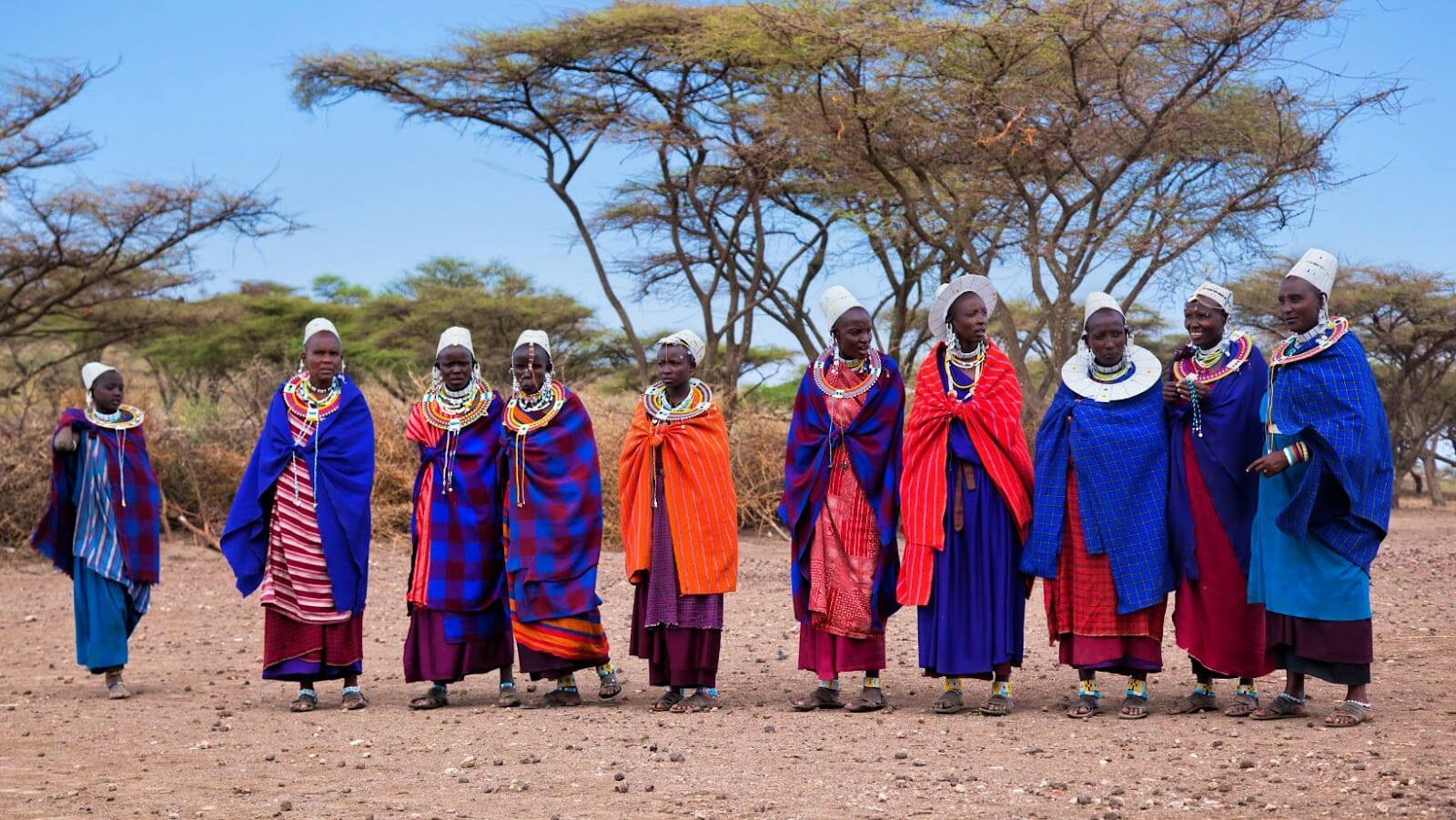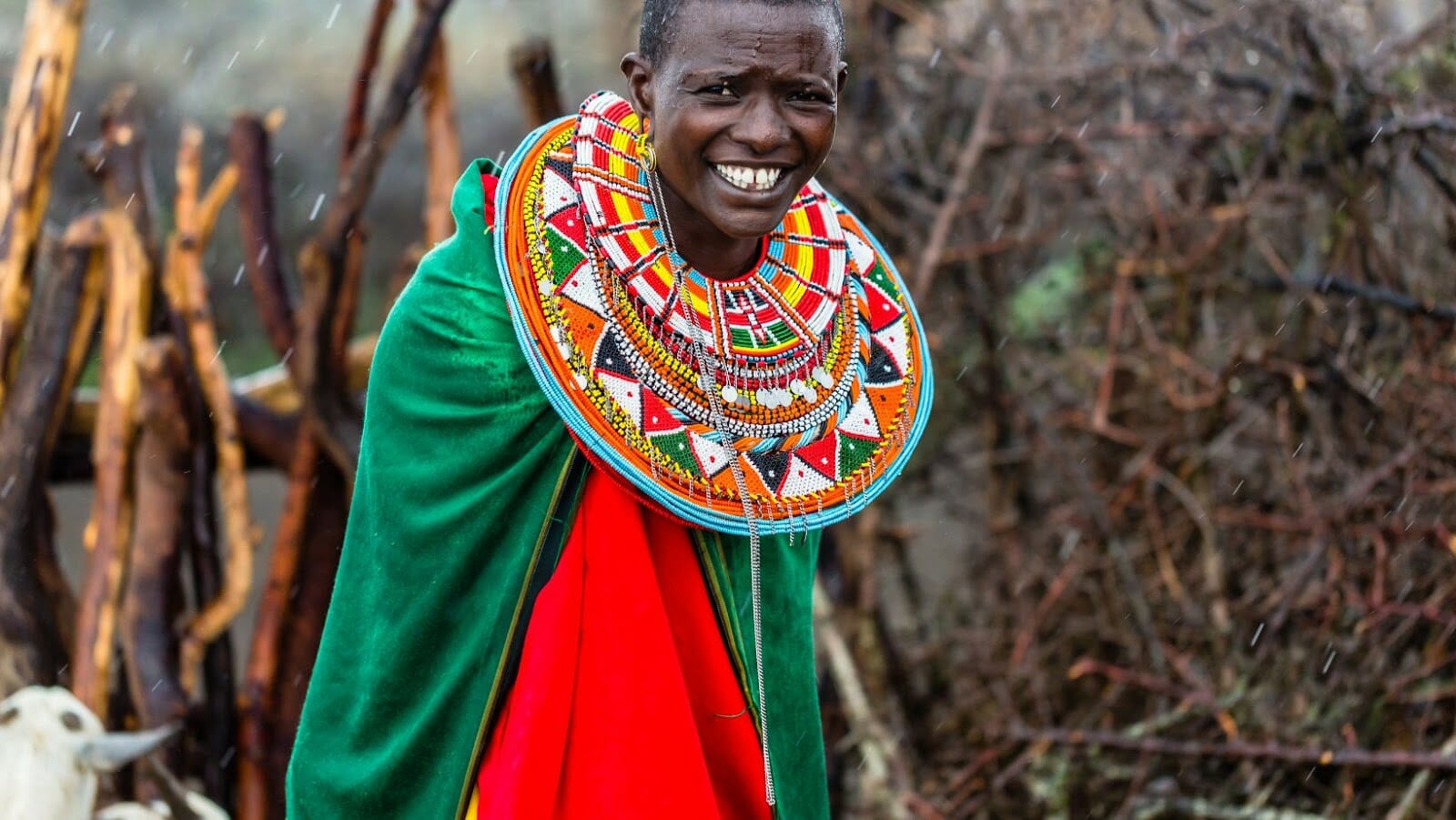The Maasai tribe is an African ethnic group that lives in the Great Rift Valley of East Africa. They are pastoralists, which means they rely heavily on herding, with their primary animal being cattle. The Maasai are renowned for their unique cultural practices and relationship with the environment.
This article will discuss the reasons why understanding the Maasai has been difficult and therefore some of their stories are classified as myth.
Which Reason Best Explains Why “The Beginnings of The Maasai” Can be Classified As A Myth?
The Maasai tribe is an indigenous group of people that have inhabited parts of East Africa for hundreds of years. The Maasai are believed to have originated from the Nile Valley and migrated south in search of better grazing land for their herds of cattle, sheep, and goats.
The tribe has a rich cultural heritage that is heavily dependent on their traditional nomadic lifestyle, livestock, and their unique customs and beliefs.
The Maasai are revered for their coexistence with the environment and their ability to maintain a balance between man and land. For centuries, they have lived in harmony with wildlife, sharing land and resources sustainably to ensure the preservation of the ecosystem.
This harmonious relationship, however, has been threatened by the rapid development and the effects of climate change on the region.
Despite these challenges, the Maasai are working towards preserving their culture and traditions while finding innovative solutions to adapt to the changing environment.
Key beliefs and practices of Maasai culture
The Maasai culture is founded on a set of strong beliefs and practices that have been passed down from generation to generation. Here are some key beliefs and practices of Maasai culture:
| Cattle are a symbol of wealth and a measure of a man’s status in society. |
| Land belongs to everyone and cattle grazing is allowed on open, unclaimed land. |
| The Maasai follow a monotheistic religion that centres on the belief in one god, Enkai |
| The Maasai practise a coming-of-age ceremony for young boys that involves circumcision and living in isolation for several months. |
| Women are responsible for building homes, collecting water and firewood, and milking cows. |
The Maasai tribe’s culture is closely linked to the environment as they rely heavily on their cattle for their livelihood. However, the overgrazing of cattle and deforestation have had a negative impact on the environment, leading to soil erosion and loss of wildlife habitats. To combat this, some Maasai have started adopting more sustainable farming practices and eco-tourism initiatives to earn a living without harming the natural environment.

Current state of the Maasai people
The Maasai people are one of the few remaining tribes in Africa who have managed to preserve their traditional way of life despite numerous challenges in the modern world. However, the current state of the Maasai people is marked by various economic, social, and environmental challenges.
| Economic challenges | Social Challenges | Environmental Challenges |
| The Maasai people rely heavily on their livestock for survival, but they are facing increasing competition for land resources and grazing areas. | The Maasai people have faced discrimination and marginalisation in Kenya and Tanzania, where they are concentrated. | The Maasai people have an intimate relationship with their environment; however, due to factors such as climate change and population growth, they have witnessed a decline in natural resources and wildlife. |
Despite the challenges, the Maasai people continue to maintain their unique cultural identity and continue to fight for their rights and the preservation of their way of life.
Myths and Misconceptions About the Maasai Tribe
The Maasai tribe has been a source of great fascination and speculation to people of the outside world for centuries. There is much mystery surrounding the Maasai and their impact on the environment and culture. Unfortunately, much of this mystery has morphed into myths and misconceptions that have been perpetuated by the media, literature, and other forms of popular culture.
In this article, we will explore some of the more pervasive myths and misconceptions about the Maasai tribe.
Examination of “The Beginnings of the Maasai” as a myth
The Beginnings of the Maasai” is a myth that has shaped the cultural identity and beliefs of the Maasai tribe. The myth depicts the Maasai as a divinely chosen group of people with a special bond with the gods, the land, and the cattle.
While some aspects of the myth are based on historical and geographical facts, such as the tribe’s origin from the Nile region and their reliance on cattle, other parts have been embellished over time or used for political and economic gain.
By examining the myth and its different versions, we can gain a better understanding of the Maasai culture and how it has evolved over time. It can also help us to recognize and challenge the myths and misconceptions that have been perpetuated about the tribe, such as the idea that they are an isolated and primitive people who live in harmony with nature.
By acknowledging the complexity of the Maasai identity and history, we can work towards a more accurate and respectful representation of the tribe and its impact on the environment.
Debunking common misconceptions about Maasai culture
The Maasai culture has been subject to many misconceptions over the years, and it’s time to debunk a few of them.
| Myth | Reality |
| 1: Maasai people are primitive and live in the wild. | The reality is that Maasai people are modern people and have adapted to modern ways of living while still preserving their culture and traditions. Most Maasai communities live in settlements with houses made of wood, iron sheets, and mud while others live in urban areas and practise modern professions like medicine and law. |
| 2: Maasai people hunt wildlife for sport and trophies. | Maasai people have a strong connection to wildlife and the environment around them. They hunt for food and not for sport. Wildlife management is part of their culture, and they live in harmony with the natural world around them. |
| 3: Maasai people prioritise their cattle over their environment. | Maasai people have a deep respect for the environment and practise sustainable farming to preserve the grasslands where their cattle graze. They have long-standing practices like rotational grazing that allow for grasslands to regenerate, for new plants to grow and create habitats for wildlife to thrive. |
Debunking these myths helps bridge cultural gaps and ensure that the Maasai people’s true culture and practices are appreciated and understood.

Addressing concerns about the impact of tourism on the Maasai people
There are several misconceptions about the Maasai people and their impact on the environment caused by tourism. It is essential to address these concerns to prevent the spread of misinformation and promote sustainable tourism practices that benefit the Maasai community and preserve the environment.
| Myth 1 | Fact |
| The Maasai people’s traditional way of life is incompatible with modern conservation initiatives. | The Maasai have a strong cultural bond with nature, and their traditional land-use practices promote sustainable resource management and biodiversity conservation. |
| Myth 2: The Maasai people are not benefiting from tourism in their region. | Many Maasai communities have formed successful partnerships with tourism operators, generating income and employment opportunities that support community development projects and promote cultural preservation. |
| Myth 3: The Maasai people are responsible for environmental degradation caused by overgrazing. | Proper grazing management practices have been developed and adopted by many Maasai communities, demonstrating their commitment to responsible management of their resources. |
Pro tip: Before visiting indigenous communities, learn about their traditions, values, and ways of life to ensure respectful and sustainable tourism practices.
The Maasai Tribe’s Relationship with the Environment
The Maasai Tribe, a semi-nomadic African tribe located in Kenya and Tanzania, have an ancient and complex relationship with the environment. They are known for their traditional beliefs and practices which impact their relationship with the environment. This can range from their practice of burning woodlands to create new pastures, to the protection of certain areas from overgrazing.
In this article, we will explore how the Maasai Tribe affects the environment and how this relationship has evolved over time.
Traditional Maasai conservation practices
The Maasai tribe has unique traditional conservation practices that have been used to protect and sustain the environment for centuries. These practices are geared towards minimising the negative impact of human activities on the environment and promoting sustainability.
Here are some of the traditional Maasai conservation practices:
| Practice | Description |
| Controlled grazing | The Maasai tribe controls the movement of their livestock in different grazing areas to avoid overgrazing and maintain a balance between vegetation and livestock. |
| Controlled burning | The Maasai people burn grasslands strategically to promote new plant growth and to prevent uncontrollable wildfires. |
| Respect for wildlife | The Maasai tribe has a deep cultural respect for animals and the environment, and they avoid practices that harm or disrupt wildlife habitats. |
| Sustainable resource use | The Maasai people have limited the use of natural resources such as water and trees, so they can be used by future generations. |
Maasai conservation practices promote environmental health and biodiversity while allowing the tribe to maintain their traditional way of life.
Pro Tip: Studying traditional cultural practices can offer valuable insights into sustainable living and environmental conservation.
The impact of modernization and external forces on Maasai environmental practices
The Maasai tribe, like many indigenous groups, has a deep-rooted relationship with the environment and a traditional set of practices that sustainably manage the land. However, modernization and external forces have greatly impacted these practices in recent years.
| Examples of Impacts |
| 1. Encroachment of grazing land by large-scale agriculture, mining, and urbanisation has disrupted the Maasai’s nomadic lifestyle and access to natural resources. |
| 2. Introduction of modern agricultural practices and livestock breeds that are not adapted to the local ecosystem has led to overgrazing and soil degradation. |
| 3. Climate change and droughts have made it harder for the Maasai to rely solely on pastoralism. |
These external forces have challenged the Maasai’s environmental practices, but efforts are being made to preserve cultural heritage and promote sustainable development.
Pro tip: It is important for communities and policymakers to engage in transparent and inclusive dialogue to support indigenous rights and protect the environment.

The role of responsible tourism and eco-conservation initiatives in preserving Maasai culture and the environment
The Maasai tribe has established itself as a beacon of eco-conservation and responsible tourism, playing a pivotal role in preserving their culture and the environment.
| Maasai eco-conservation initiatives include: |
| 1. Grazing and Range Management: The Maasai tribe employs a rotational grazing system, allowing grasslands to recover and regenerate. |
| 2. Wildlife Conservation: The tribe has established conservancies, providing habitats for various endangered species and promoting eco-tourism. |
| 3. Cultural Preservation: The Maasai tribe has preserved its heritage through cultural tourism, providing a platform for visitors to learn about their customs and traditions, thus instilling pride in the tribe’s cultural identity. |
By encouraging responsible tourism and eco-conservation, the Maasai tribe has become a trailblazer, demonstrating how cultural preservation, environmental sustainability, and economic development can complement each other while remaining in harmony.
Pro tip: When travelling to the Maasai tribe’s areas, it is essential to respect their cultural norms, engage with them in culturally appropriate manners and support eco-conservation initiatives. This will ensure that the tribe’s cultural identity, lifestyle and the environment continue to be protected for generations to come.


